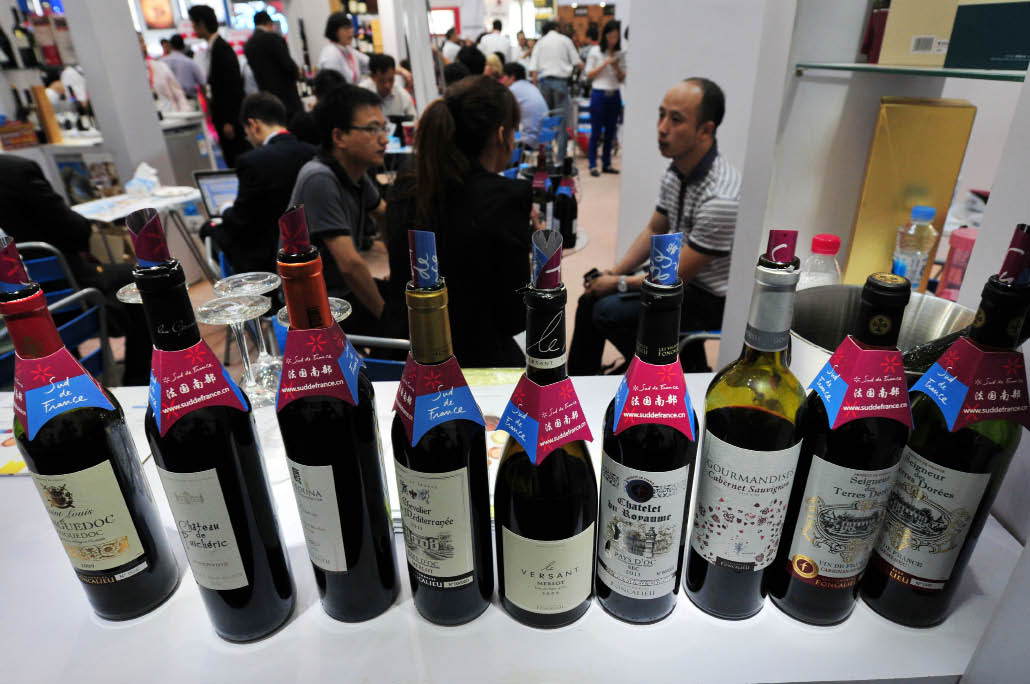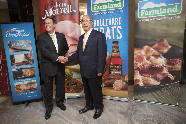Made in Where?
A Wine Provenance Verification System to Root out Counterfeits
By staff reporter JIAO FENG
 |
| The provenance verification system boosts healthy development of China's wine market. |
CHINA’s first provenance verification system for imported wines was formally unveiled in Shenzhen in November 2012. Its application is expected to strengthen China’s supervision of imported wines, help root out counterfeit products and further protect consumers’ rights. It should also guarantee quicker customs clearance procedures for imported wines.
Supported by the Shenzhen government, the provenance verification system was developed by the China Certification and Inspection Group (CCIC), Hong Kong-based Global Wine Solutions Limited (GWS) and NOVATEC of France, with additional contributions from a number of other institutions and enterprises.
The system enables consumers to differentiate between counterfeit and genuine imported wine with the help of a program that cross-references a bottle’s anti-counterfeit marking against a comprehensive internet database. Experts say the provenance verification technology could also be applied to import inspection and certification of bulk commodities such as soybean, rice and edible oil. Widespread implementation of the technology will contribute to the establishment of a fairer and more trustworthy market environment.
A Nation of Wine-Drinkers
With China’s rapid economic development and expanding middle class, the country’s citizens are showing an increasing preference for drinking wine. The product is viewed as a “refined” and healthy choice compared with other alcoholic beverages.
The year 2012 saw China surpass Britain to become the world’s fifth largest wine-consuming country. The country’s huge demand for the drink has not only provided a sizable market for domestic wine producers, but also resulted in a massive influx of imported wines.
According to data from Chinese customs, in 2011, the total volume of China’s imported wine stood at 301,600 kiloliters, representing a 27.6-percent increase over 2010. The first nine months of 2012 saw a slightly slower year-on-year increase of 14.5 percent to 307,000 kiloliters.
Imported wine now accounts for around 30 percent of China’s wine market. As sales of cheaper, mass-produced wine decline, however, the market is trending toward the higher-end. The market share of top-quality, imported wines is thus projected to rise in the near future.
Vineyards in France, Australia, Spain, Chile, Italy and the United States are the main suppliers of China’s wine imports. From 2002 to 2011, imports from these six countries accounted for 90 percent of China’s overall imported wine on average.
In the past, China’s supervisory authorities and consumers had scant access to accurate information on imported wine’s provenance. Trading between dealers coupled with the lack of a standard reference database meant confirming bottles’ authenticity was prohibitively time-consuming. Some took advantage of the information gap to counterfeit bottles. Such a practice is not only illegal, but also harms the market for authentic wine and infringes on consumers’ rights.
Provenance Verification for a Trustworthy Market
To guarantee the quality of imported wines and protect consumers’ legal rights, China’s quality inspection authorities have adopted a range of inspection and supervision measures. With the application of the new provenance verification technology, the government has taken over responsibility for ensuring comprehensive supervision of importers’ activities. Importers and retailers also have a role to play in ensuring supervision requirements are met.
CCIC President Liu Shengming says his organization has begun cooperating with Hong Kong-based GWS to carry out wine inspection activities in Bordeaux, one of France’s premier wine-growing regions. Through its office in Spain, the CCIC is actively testing wines, labeling bottles with anti-counterfeit marks and inspecting the bottling process in the Bordeaux châteaux that sell to the Chinese market.
The CCIC is also responsible for issuing verification documentation that attests to the provenance of imported wines. This represents the first time the CCIC has carried out provenance testing outside China. Liu says this is a CCIC innovation that could be adopted in other industries to guarantee across the board food and beverage safety for Chinese consumers.
The wine provenance verification technology is based on Prooftag’s “bubble tag” anti-counterfeit technology, which was first employed in France late last century. Commissioned by GWS, the CCIC will verify wine origins, test samples of products, inspect bottling and supervise the labeling of anti-counterfeit marks. CCIC will then release all relevant information pertaining to provenance certification and bottle inspection on an internet database.
China’s import and export food inspection and quarantine authorities will be able to carry out rapid, real-time provenance checks as wine enters the country. The authorities can pre-examine relevant documents and check for authenticity in advance of the arrival of wine shipments. Should consumers still have qualms once they receive their imported wine, they can refer to the online database and confirm their bottles’ provenances for themselves.
Liu said the CCIC’s new verification system has been warmly welcomed by Chinese consumers and supervision authorities. The system means greater peace of mind for consumers. It also guarantees more information on the history of individual bottles, a key concern for both wine consumers and investors alike. In short, the provenance verification system will help China’s supervisory authorities root out counterfeits and contribute to establishment of a more reliable wine market.
Wider Applications
The internet has widened the consumption possibilities of people the world over. No longer are individual countries’ citizens restricted to buying only what is available on local shelves. Chinese in particular have taken to purchasing imported food ordered on the internet with great enthusiasm.
Unfortunately, inspection and quality control of produce ordered from overseas has not kept pace with the growth in the market. Issues of food security, both from within China and abroad, have triggered concern among members of the public. This is not just a Chinese phenomenon – a survey conducted by Switzerland’s Federal Office of Public Health indicated that 82 percent of consumers regarded foodstuff’s origin as the main factor in determining their choice of products.
In the digital age, it’s a big challenge for supervisory authorities to ensure consumers have easy access to real-time and accurate information on the origins of food products.
The implementation of wine provenance verification technology has laid a solid foundation for ensuring consumers’ peace of mind and promoting the healthy development of China’s imported wine market. It provides reliable information on original wine producers, provenance inspection and testing of wines and logistics chains. As a new, comprehensive model for import inspection and supervision, the verification system has the potential to become standard across a range of produce import industries.
Tips: How to spot a counterfeit wine in five seconds.
Each bottle of imported wine in China is marked with a random “bubble” pattern and a label featuring an identification code. Once a consumer has entered the bottle’s identification code on the website the stored bubble pattern will be displayed. All the consumer needs to do is compare the database pattern with the bubble pattern appearing on his or her bottle. If the identification label is ripped or appears to have been removed at some point in the past, it is best to avoid the purchase.

